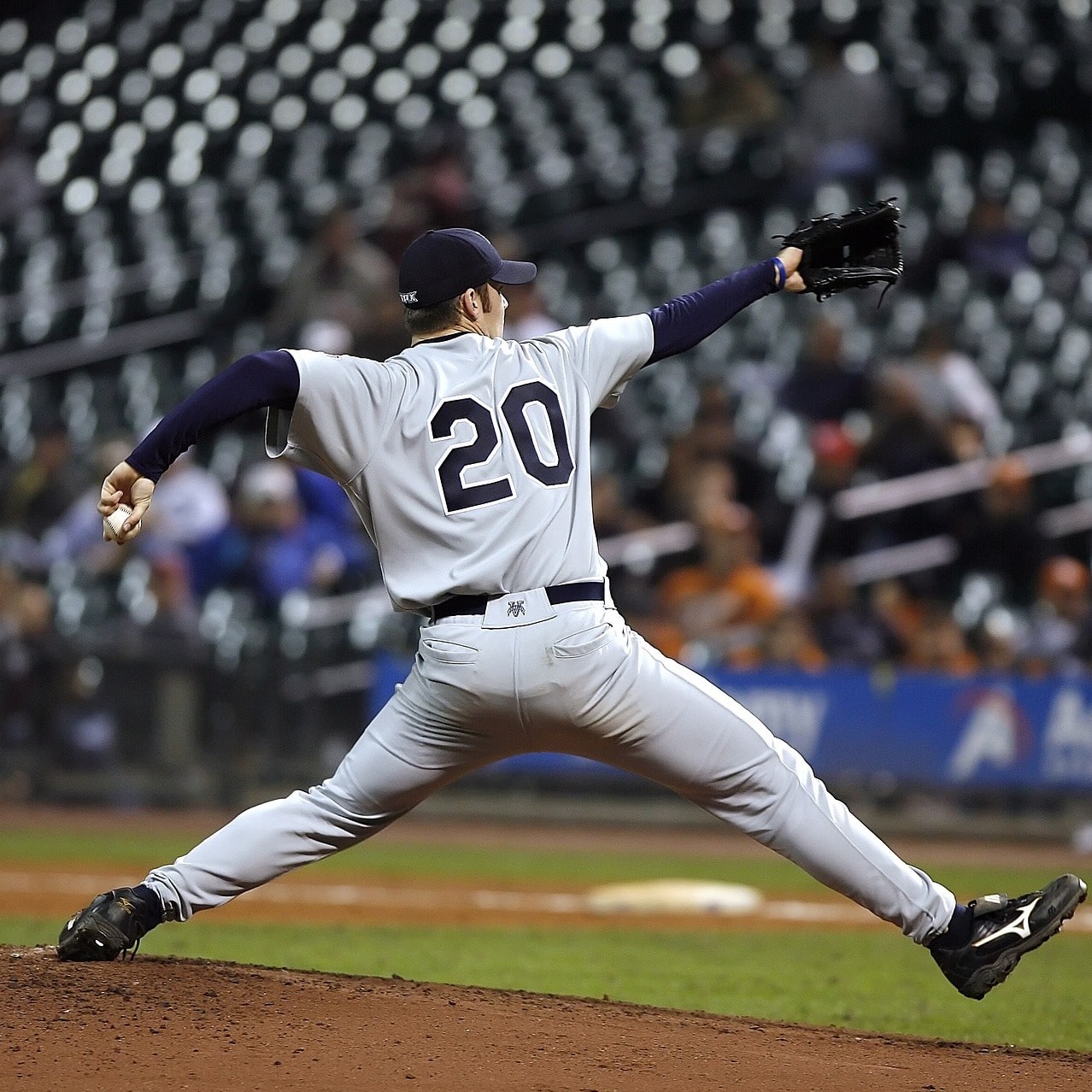Get Centered for Better Performance and Less Pain
Each month, we feature a new WAV move that targets key motor functions. This month’s blog features a pro level discussion with a move that’s easy to follow at the clinic or in your home.
This simple yet powerful brain-body exercise will help you find your center before moving into other activities. If you are a movement pro or enthusiast then read on. If you don’t need all the background and are just ready to benefit from this exercise then skip down to the instructional segment at the end. We created this move knowing that when it comes to shoulder pain, many of us have pro athlete experience.
Centration! Centration! Centration!
As movement professionals we all understand the concept of “neutral” spine, but have you ever carried the idea into other joint complexes? A neutral spine is the ability to maintain an erect spinal column without excessive force on one vertebral joint or space compared to another. So what about “neutral” joints, like the shoulder and pelvic girdle? Dr. Pavel Kolar, the founder of DNS, explains that maintaining neutral joint position or what he calls - joint centration - is a dynamic neuromuscular strategy that allows the body to move more optimally and helps reduce strain and overuse. When joints are centrated the bony surfaces of each joint space are positioned to support and maintain optimal body mechanics through range of motion and functional activities.
“Centrated joint are better positioned for optimal body mechanics”
Many sporting techniques and activities of daily living range from closed chain to open chain movements and demand an equal but opposing coordination of mobility versus stability. In order to have optimal mechanics and muscular support while performing these activities without pain, crepitus or pathology joint centration is key!
Joint Centration is a Home Run!
Let’s consider a baseball pitcher to demonstrate the importance of joint centration for the shoulder.
Throwing, specifically baseball pitching, is one of the most intensely studied athletic motions. Research has primarily focused on the shoulder girdle mechanics however, full brain-body coordination is necessary for safe and effective throwing mechanics. Did you know throwing is one of the fastest human motions that can be performed? A maximum humeral velocity (internal rotation) during a pitch can be upwards of 7000 degrees per second! That is incredibly fast. This speed can wreak havoc on joints and soft tissue. Keeping the shoulder joint centrated allows body rhythm and soft tissue elasticity to coordinate which creates a home run for the shoulder girdle.
The phases of overhead throwing consist of a wind up, stride, cocking, acceleration, deceleration and follow through phase. The most common shoulder injuries in baseball pitching occur primarily in the late cocking and deceleration phase. It has been hypothesized that there is a greater risk of shoulder injury in the cocking phase due to the increase and translation of kinetic energy from the lower extremities to the throwing extremity. Improper stabilization of the scapula and glenohumeral joint can lead to increased risk of shoulder impingement.
This demonstrates that not only should the glenohumeral joint itself be centralized, but all joints from the push off lower extremity to finger tips! Hence, why throwing or racquet athletes must not only focus on their “rotator cuff” like many of us assume, but also look at the body’s ability to maintain centration as each joint coordinates mobility and stability.
Moving to the deceleration phase generates the greatest joint loading with about 40-50% of the body weight. This creates a posterior shearing force on the shoulder joint to resist shoulder subluxation and distraction. Understanding this, the posterior muscles are under significant demand to create tensile strength to minimize inappropriate load to biceps, labrum, and GHJ capsule.
Life is a Heavy Hitter
Injuries such as rotator cuff tendonitis, biceps tenodnis and elbow epicondylisis are common in throwing sports, but shoulder impingement from daily activities is considered the most common cause of shoulder pain. We all know that mover who has pain as they lift their arm to reach for a seatbelt, coffee cup or to dry their hair. The painful glenohumeral arc at 45 to 120 degrees of shoulder abduction is the key sign centration is lacking in the shoulder girdle.
“Any life ‘sport’ that involves throwing and reaching can be challenging and painful if shoulder centration is lost.”
Shoulder pain has numerous underlying pathologies that may cause impingement symptoms. Glenohumeral instability, rotator cuff or biceps pathology, scapular dyskinesis, labrum lesions and glenohumeral internal rotation deficit have all been associated with impingement symptoms in the clinical literature.
Joint centration demonstrated in this month’s move is great for the everyday mover or athletes, especially in throwing or racquet sports. Joint centration for the shoulder girdle allows the glenohumeral joint to be congruent with the humeral head. It also means the rotator cuff muscles and the surrounding shoulder stabilizers (i.e., rhomboids and serratus anterior) can function efficiently as well.
Even though throwing sports are an open chain activity, the weight bearing portion of this exercise in coordination with the WAV Trainer, stimulates the eccentric length of the shoulder and pelvic girdle. It’s an excellent way to “preheat” the fixed versus moving points of stabilizing muscles prior to any open chain or throwing activities.
Not training a major league baseball pitcher? No worries. Any life "sport", like reaching into the cabinet overhead or reaching into the fridge to lift a gallon of milk, can be challenging and painful if shoulder centration is lost. Modify this move and try it by leaning on a sturdy counter and table! You will be surprised at how quickly the brain-body connection decreases pain perception at the joint space and improves the overall mechanics of the joint.
Step One
Begin in low kneeling with your forearms and knees on the ground.
Place the WAV at the ends of your fingertips with the WAV logo in line with your nose.
Elongate your spine to neutral with your head, shoulders and pelvis in one line.
Shift your weight forward to your shoulders and then backward toward your knees keeping your neutral spine. HINT: Think of this as an internal push and pull around the shoulders and hips as you move.
Continue to rock forward and backward sensing your weight into the arms and across the shoulders and then to the pelvis and thighs.
What am I doing?
The 5-6 month old position works spinal stability; coordinates concentric and eccentric push/pull of the shoulder and pelvic girdles to sustain centration in the ball and socket joints.
What am I mindful of?
Did the shoulders collapse and lose neutral shape of my neck?
Does the tailbone and pelvis tuck or extend to initiate hip flex?
Do the movements feel relaxed and calm?
Step Two
Begin in low kneeling with your forearms and knees on the ground.
Place the WAV at the ends of your fingertips with the WAV logo in line with your nose.
Elongate your spine to neutral with your head, shoulders and pelvis is one line.
Maintain equal weight throughout the shoulders and pelvis.
Begin to rotate your neck and look to your right hand as you supinate the palm.
Repeat to the opposite side maintaining your neutral spine.
What am I doing?
Coordinating abdominal stability with cervical mobility.
Improving dynamic integration of upper and lower body with gaze stabilization.
Maintaining centration of hips and pelvis while weight bearing.
What am I mindful of?
Am I maintaining a neutral spine?
Did I notice a challenge to look left or right?
Did I feel more tension in the front or back of my shoulders?
References for the DNS, sports rehabilitation and pitching concepts discussed in this article can be found here:
- Clare Frank, DPT, OCS, FAAOMPT, Alena Kobesova, MD, PhD, Pavel Kolar, PT, PhD. Dynamic Neuromuscular Stabilization and Sports Rehabilitation, International Journal of Sports Physical Therapy, 2013 Feb; 8(1): 62–73
- Houglum PA, Bertoti DB. Brunnstrom's clinical kinesiology. FA Davis; 2012.
- Seroyer ST, Nho SJ, Bach BR, Bush-Joseph CA, Nicholson GP, Romeo AA. The kinetic chain in overhand pitching: its potential role for performance enhancement and injury prevention. Sports Health: A Multidisciplinary Approach. 2010 Mar 1;2(2):135-46.
- Escamilla R, Andrews JR. Shoulder Muscle Recruitment Patterns and Biomechanics during Upper Extremity Sports. Sports Med 2009; 39 (7): 569-590.
- Zack Greinke Pitching Mechanics Slow Motion Baseball Instruction Analysis LA Dodgers MLB 1000 FPS.
- Whiteley R. Baseball Throwing Mechanics as They Relate to Pathology and Performance – A Review. Journal Sports Science Med 2007 6:1-20.
Want to know more about using the WAV in your practice? Contact us for more information on our sensory-based training approach.




